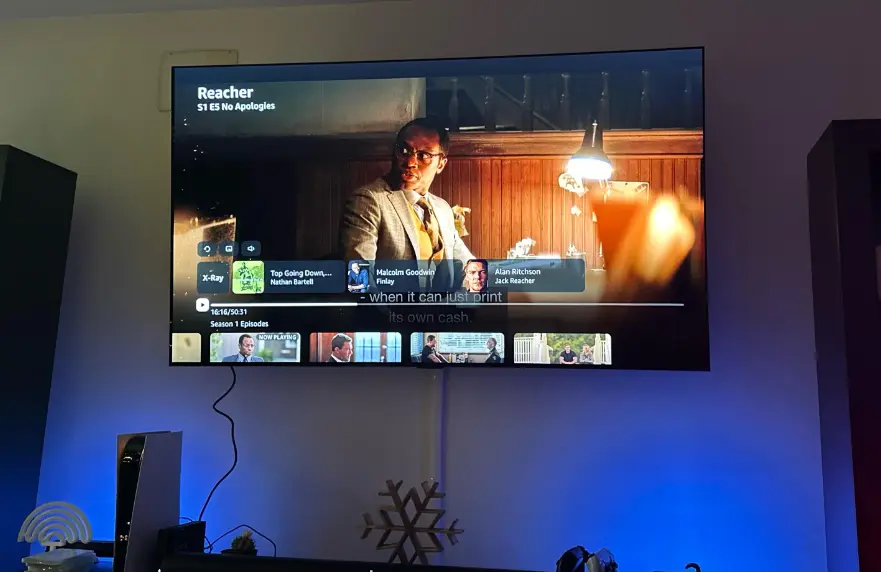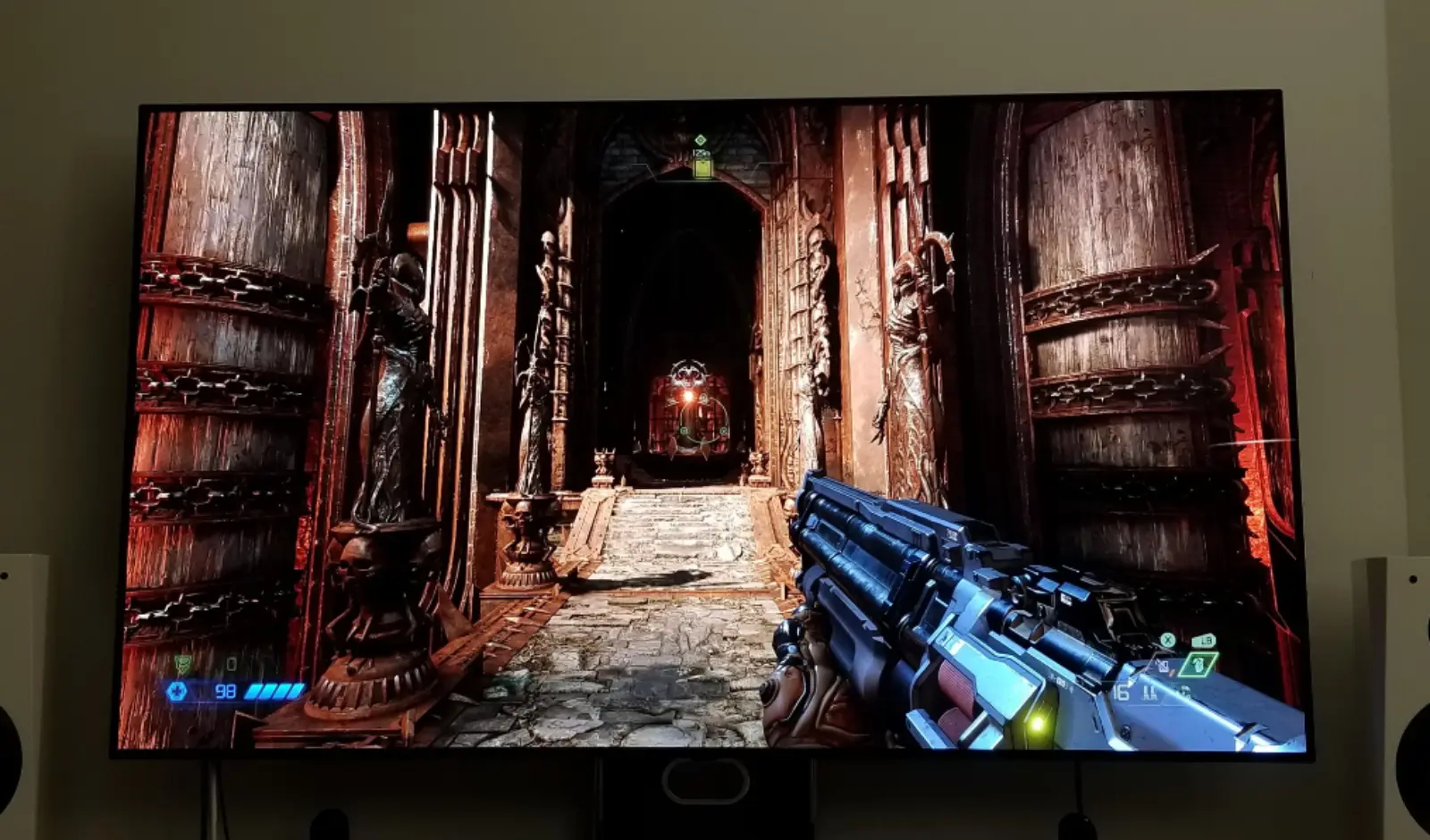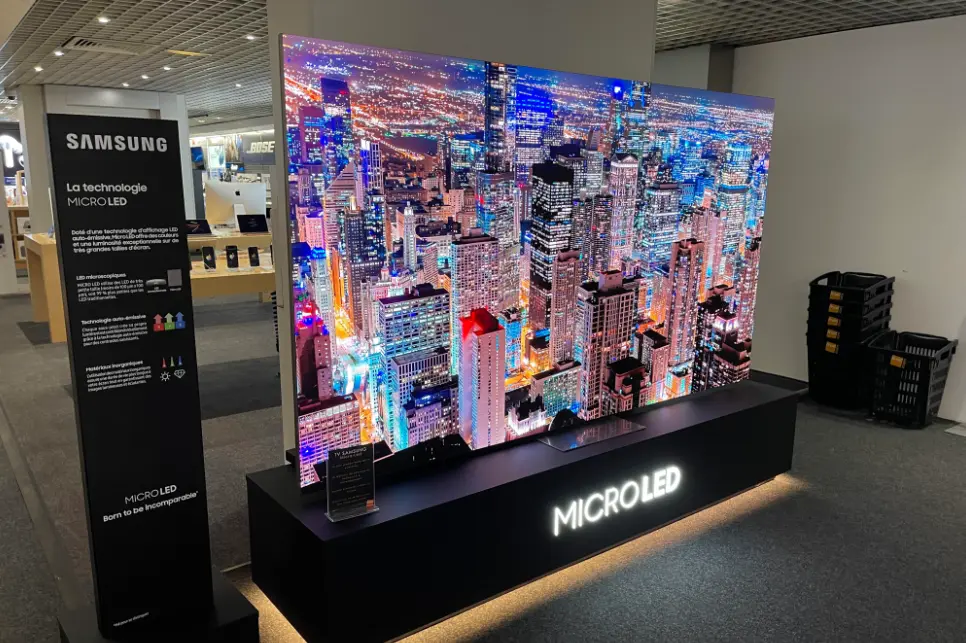There are primarily three types of TVs on the market: LCD, OLED, and QLED.
LCD TVs are the most common and affordable, which uses LED backlighting to illuminate the screen.
On the other hand, OLED and QLED TVs offer exceptional contrast, vibrant colors, and slim designs by lighting each pixel independently.
Here’s all types of TVs are explained:
LED TV

LED TVs are actually a type of LCD TV, but instead of using older backlighting technology called CCFL, they use LED lights.
It stands for Light Emitting Diode.
The big advantage of LED backlighting over CCFL is that it uses less energy, makes TVs thinner, and can potentially make the picture look better because it can control the light more precisely.
There are two types of LED backlighting:
- Full-array LED backlighting: LEDs are placed directly behind the LCD panel. This allows for better control of light, making blacks darker and highlights brighter compared to CCFL backlighting.
- Edge-lit LED backlighting: LEDs are placed along the edges of the screen and shine light inward. This makes the light distribution more even but might not be as bright or have as high contrast ratios as full-array LED backlighting.
Even though they’re called LED TVs, they’re really just LCD TVs with LED backlighting. However the term “LED TV” is commonly used in ads.
There are other fancy display technologies too, like OLED, which don’t need backlighting and can show really dark blacks and control each pixel’s brightness individually.
If you are curious to know more about LED TVs, check out this article.
OLED TV

OLED TVs are different from regular LED/LCD TVs.
Unlike traditional LED TVs, which have a backlight and an LCD panel, OLED TVs have individual organic cells that emit their own light and color independently.
This ensures you get really dark blacks and brighter colors.
Compared to LED or LCD TVs, OLED TVs are much thinner, lighter, and let you see the screen clearly from different angles.
However, here are the main things to know about OLED TVs:
- Technology: OLED TVs have pixels that light up by themselves, unlike LED/LCD TVs that use a light behind the screen.
- Contrast: They show better contrast with really dark blacks and bright colors because each pixel works independently.
- Thickness: OLED TVs are super thin and light because they don’t need a backlight.
- Viewing Angles: You can see the screen well from different angles, which is great for watching with friends or family.
- Price: OLED TVs are usually more expensive than LED TVs because of their advanced technology.
If you are curious to know more about OLED TVs, check out this article.
QLED TV

QLED TV was first developed by Samsung in 2015 and officially launched in 2017.
It stands for Quantum Dot LED TV.
Actually, these TVs use a special layer of small particles called quantum dots in front of the backlight. It helps produce more vibrant colors compared to regular LED TVs.
However, QLED TVs were among the first to use this quantum dot technology.
Unlike OLED TVs, which use organic materials, QLED TVs combine LED backlights with quantum dots.
This combination lets QLED TVs achieve very bright pictures while still showing colors accurately across the entire spectrum, including deep blacks and bright whites.
As of 2023, Samsung remains a leader in making QLED TVs.
Other big electronics companies like LG, Panasonic, and Sony also make QLED TVs, but not as many as Samsung.
MicroLED TV

It is considered as the Next Big Leap!
“Tiny Lights, Huge Impact”–That’s the core idea of MicroLED
In simple terms, MicroLED TVs use really small LEDs to create each little dot on the screen. They don’t need a separate light behind them or special filters for colors.
That’s why, MicroLED TVs are brighter, thinner, use less power, and last longer compared to regular LCD, OLED, or QLED TVs.
But they’re still expensive because making them is complicated, and they don’t have a lot of dots per inch yet.
For example, the smallest MicroLED TV you can buy costs $100,000 for a 110-inch model!
However, experts think that by 2027, prices could drop by 75%, which would make MicroLED TVs more affordable for regular people.
Right now, MicroLED TVs are mostly made to order instead of being mass-produced for everyone. Companies like Samsung are working on making them cheaper so more people can buy them in the future.
There are also older types of TVs still hanging around, like
- Plasma
- DLP
- And Direct-view TVs.
But, they’re slowly disappearing from the market.
Some people like to collect them for fun, or keep them in their garage as a reminder of the old days.
F.A.Q.s
Q: What is the difference between OLED and QLED?
OLED stands for organic light-emitting diode, and QLED stands for quantum light-emitting diode.
OLED TVs use self-illuminating pixels that can turn on and off individually, while QLED TVs use quantum dots that emit light of different colors when exposed to electricity.
OLED TVs have better contrast, color, and viewing angles, while QLED TVs have better brightness and longevity.
Q: Are Plasma TVs still available in the market?
No, Plasma TVs have been largely phased out of the market due to advancements in LED, OLED, and QLED technologies.
Q: Do all TVs support 4K resolution?
No, not all TVs support 4K resolution.
However, many newer models, especially in the mid-range and high-end segments, do offer 4K resolution.

Abdul Kader, a handy guy and experienced founder of a TV repair shop in Gulshan, Dhaka, Bangladesh. He is mainly an expert in understanding and repairing different types of issues with Smart TVs and providing helpful insights on how to keep them in good working order. Read his Full Story.

